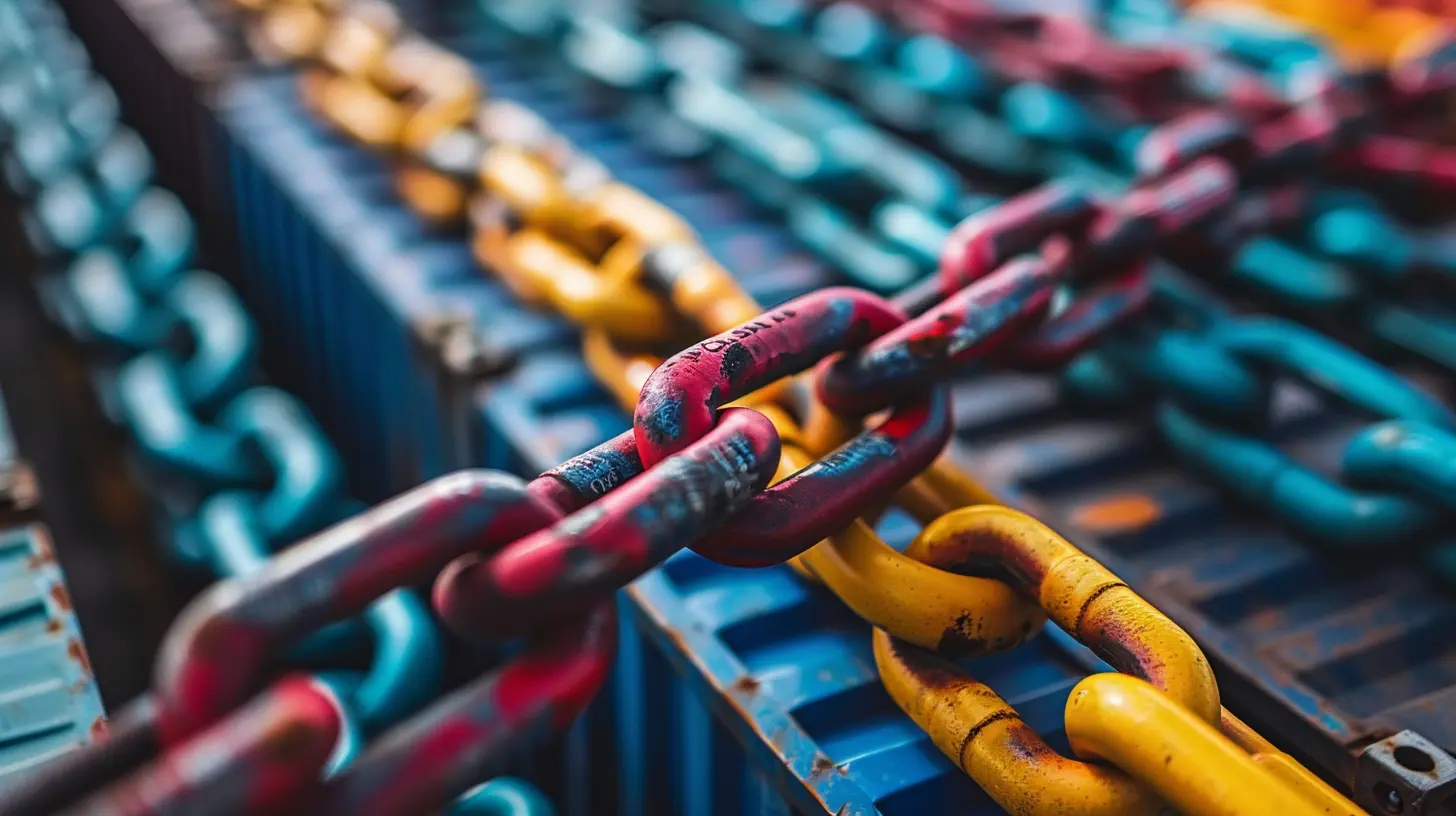Transforming Cross-Border Transactions: The Blockchain Advantage
23 September 2025
Have you ever sent money abroad and felt like it took forever to process or cost way more than it should? If you've been frustrated by delays, fees, or lack of transparency in cross-border transactions, you’re not alone. The way we move money and assets across borders has been stuck in the past—until now. Enter blockchain technology, a revolutionary approach that’s changing the game for international payments.
Blockchain is like that superhero sidekick you didn’t know you needed. It’s fast, transparent, reliable, and ready to fix the inefficiencies of traditional systems. But how exactly does it transform cross-border transactions? Let’s break it down and dig into why blockchain is leading the charge in this space.
The Trouble With Traditional Cross-Border Payments
Before we dive into blockchain, let’s talk about what’s wrong with the current system. You know that feeling of dread when you send money overseas and don’t know where it is or when it’ll arrive? That’s because today’s cross-border payment system is riddled with problems. Here are a few that stand out:1. High Transaction Fees
Have you ever noticed how much money you lose to middlemen like banks, payment processors, or third-party services when transferring funds internationally? The average cost of cross-border remittances sits around 6.5% globally. That might not sound like a lot at first, but those fees stack up quickly over time. It’s frustrating, isn’t it?2. Slow Processing Times
Let’s face it: it shouldn’t take five days to move money from one country to another in the digital age. Yet, traditional banking systems still rely on outdated methods like the SWIFT network, which involves a network of intermediary banks. It's like sending a letter via snail mail in a world of instant messaging.3. Lack of Transparency
Where is your money during that five-day transfer period? Who knows? Transparency is one of the weakest points of traditional systems. Most users are left in the dark about what’s happening behind the scenes or why certain fees are deducted.4. Risk of Errors or Fraud
Errors in cross-border payments are more common than you think. Banks rely on manual processes, numerous checkpoints, and outdated protocols. Plus, let's not ignore the risk of fraud, with hackers constantly targeting vulnerable systems.
Enter Blockchain: The Game-Changer
Now, imagine a scenario where transactions are faster, cheaper, more transparent, and less prone to fraud. Sounds like a dream, right? That’s exactly what blockchain technology aims to deliver. If traditional financial systems are a rusty old bike, blockchain is a shiny new sports car zooming past inefficiencies.What Is Blockchain, Anyway?
At its core, blockchain is a digital ledger that records transactions in a secure, decentralized way. Think of it as a digital notebook where every transaction is written in permanent ink and cannot be erased or altered. It’s like having an unforgeable receipt for everything you do.The key is decentralization. Unlike traditional systems controlled by banks or governments, blockchain operates across a global network of computers (or nodes). This means no single entity has control, making it more resilient to tampering.
Why Blockchain Is Revolutionizing Cross-Border Transactions
So, how exactly does blockchain solve the problems we talked about earlier? Let me walk you through the key ways this tech is changing the cross-border payments game.1. Speed: Instant Transactions
With blockchain, forget about waiting days for your money to arrive. Transactions processed on a blockchain happen almost instantly. Whether you’re sending money to a relative abroad or paying a supplier in another country, the days of agonizing delays are over. It’s like upgrading from dial-up internet to fiber optic.For example, Ripple, a blockchain-based payment platform, allows users to move money internationally in a matter of seconds. Compare that with traditional systems that take days!
2. Lower Costs
Remember those hefty fees? Blockchain drastically reduces them. By cutting out middlemen such as banks and clearinghouses, blockchain eliminates unnecessary costs. Essentially, you’re trimming the fat from the process.Take cryptocurrencies like Bitcoin or stablecoins like USDC as examples. These digital currencies allow money to be transferred directly between users, often for a fraction of what traditional payment processors charge.
3. Enhanced Transparency
Blockchain doesn’t do secrets. Every transaction is recorded on a public ledger that anyone can view. So, you’ll always know exactly where your money is and how much was deducted. No more "mystery fees" eating into your funds.This level of transparency builds trust, especially for businesses and users making regular international payments. Think of it as having access to a GPS tracker for your money.
4. Improved Security
Because blockchain is decentralized and encrypted, it’s incredibly secure. Transactions are verified by a network of computers rather than a single point, making it nearly impossible to hack. Plus, once a transaction is added to the blockchain, it can’t be edited or erased. It’s as permanent as writing in stone.Compare that to traditional systems, where a single breach can expose sensitive information or funds. Blockchain essentially locks the front door, back door, and windows to prevent unauthorized entry.
5. Inclusivity and Financial Access
Here’s a fun fact: Over 1.4 billion adults globally are unbanked—that means they can’t access financial services like traditional bank transfers. Blockchain is a lifeline for these individuals. With just a smartphone and internet access, anyone can send or receive cross-border payments using blockchain and cryptocurrencies.
Real-World Applications of Blockchain in Cross-Border Payments
Still not convinced? Let’s look at some real-world examples of how blockchain is already making a difference:1. Ripple (XRP)
Ripple is one of the biggest players in blockchain-powered cross-border payments. Its system allows banks and payment providers to process transactions efficiently, reducing processing times from days to seconds.2. Stellar (XLM)
Stellar focuses on connecting banks and payment systems while reducing costs. It’s particularly impactful in regions where traditional financial systems are inaccessible.3. IBM Blockchain World Wire
IBM has also jumped on the blockchain bandwagon with its World Wire platform, which simplifies cross-border payments for financial institutions worldwide.Challenges to Overcome
Of course, blockchain isn’t perfect—yet. There are still a few hurdles it needs to clear:- Regulation: Governments are still figuring out how to regulate blockchain, and the lack of clear policies can be a roadblock.
- Scalability: Blockchain networks like Bitcoin can sometimes struggle with high transaction volumes, leading to slower processing times.
- Adoption: Not everyone is onboard yet. For blockchain to truly take over, businesses, banks, and governments need to embrace it.
But with ongoing development and growing adoption, these challenges are slowly being tackled.
What’s Next for Blockchain in Cross-Border Transactions?
The future is looking bright for blockchain. As more businesses, governments, and individuals realize its potential, adoption is set to grow. We might even see a world where blockchain becomes the standard for all cross-border payments. That rusty old bike of traditional systems? It’ll finally be replaced by the blockchain sports car.We’re on the brink of a revolution. And if you ask me, blockchain isn’t just transforming cross-border payments—it’s rewriting the rules.
Wrapping It Up
Whether you’re an individual sending money to family overseas or a business making international transactions, blockchain offers a better way. It’s faster, cheaper, more transparent, and far more secure than the systems we’ve relied on for decades.The technology is still evolving, but one thing is clear: blockchain isn’t just a buzzword. It’s the future of cross-border transactions. And honestly, isn’t it about time we moved on from outdated systems?
all images in this post were generated using AI tools
Category:
Blockchain In BusinessAuthor:

Baylor McFarlin
Discussion
rate this article
1 comments
Mara Wolfe
Blockchain weaves trust across borders, a digital tapestry of seamless exchange, where transactions flow freely, and innovation knows no bounds.
September 26, 2025 at 3:43 AM

Baylor McFarlin
Thank you! I appreciate your poetic take on blockchain's potential to enhance trust and innovation in cross-border transactions.


